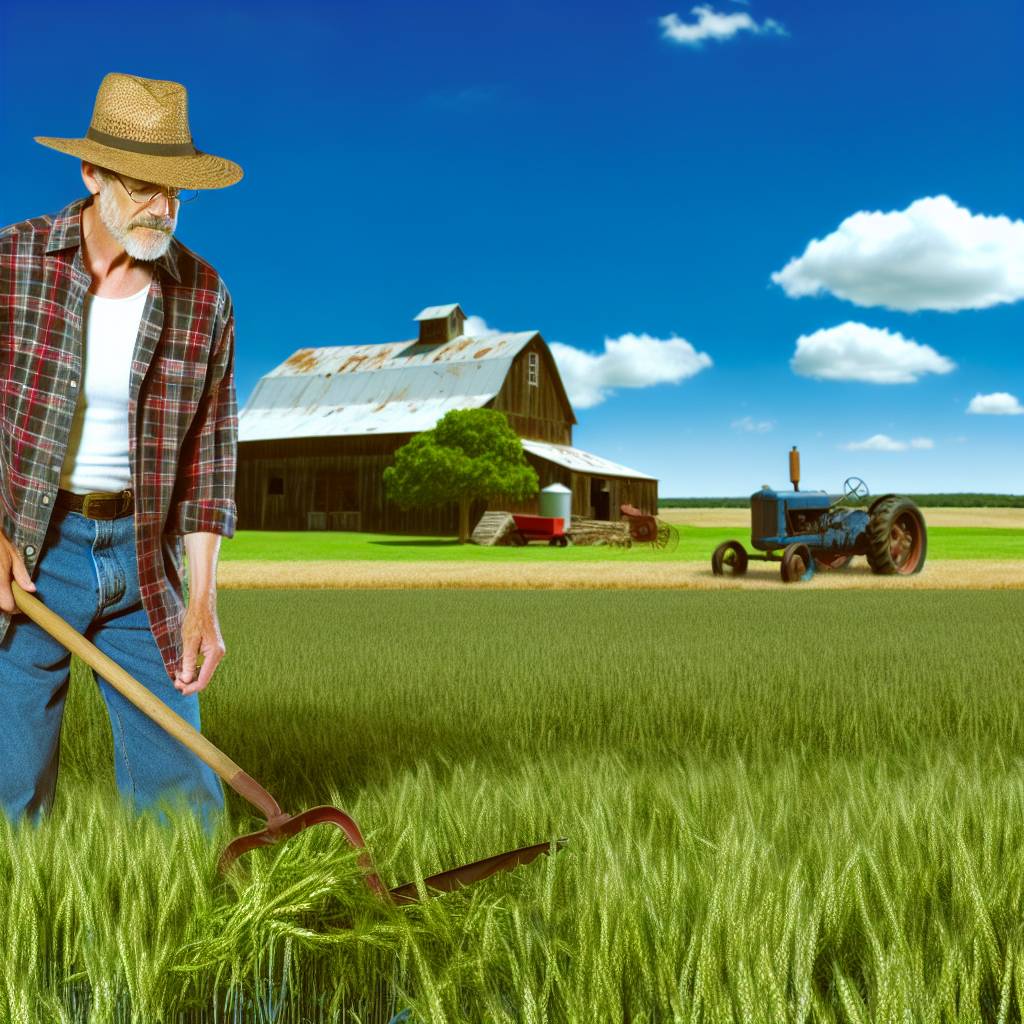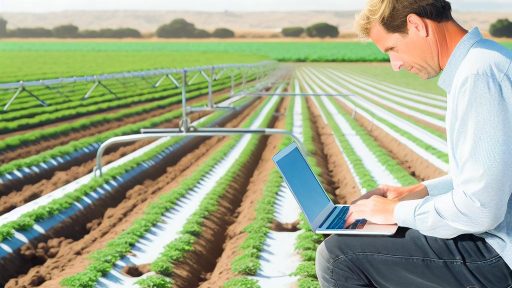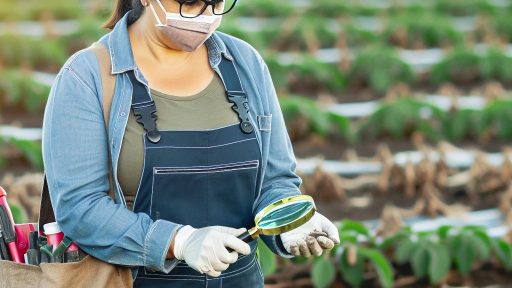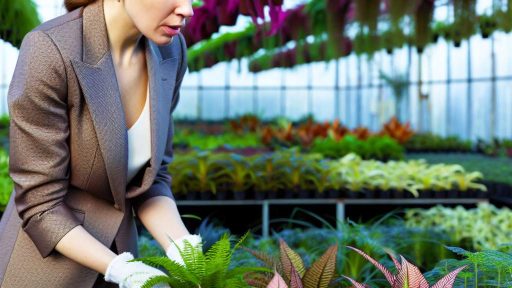Overview of Harvesting Methods in Agriculture
Traditional Harvesting Techniques
Farmers have used traditional harvesting methods for centuries.
Cutting crops by hand remains common in many regions.
This method allows for precise selection and timing.
Furthermore, it can be beneficial for delicate crops.
However, traditional techniques often require significant labor resources.
Mechanized Harvesting
Mechanization has transformed the agricultural landscape dramatically.
Harvesters now automate the collection of crops efficiently.
Modern combines can process large fields quickly.
Moreover, mechanized harvesting reduces the need for manual labor.
Many farmers find this approach increases overall productivity.
Precision Agriculture and Smart Technologies
Advancements in technology have led to precision agriculture practices.
These techniques optimize resource use and improve yields.
Smart sensors can monitor crop conditions in real-time.
Consequently, farmers can make informed harvesting decisions.
Drones and GPS technology enhance efficiency and accuracy.
Transform Your Agribusiness
Unlock your farm's potential with expert advice tailored to your needs. Get actionable steps that drive real results.
Get StartedOrganic and Sustainable Harvesting Practices
More farmers are adopting organic harvesting methods.
This approach focuses on minimizing environmental impact.
Organic practices promote soil health and biodiversity.
Furthermore, they often use manual techniques to reduce machinery reliance.
Sustainable methods can also appeal to environmentally conscious consumers.
Future Directions in Harvesting Techniques
Farmers face various options when it comes to harvesting.
The choice of method depends on crop type, scale, and resources.
Each technique offers unique advantages and challenges.
As agriculture evolves, so will harvesting strategies.
Importance of Choosing the Right Harvesting Method for Diverse Crops
Enhancing Crop Yields
Choosing an appropriate harvesting method significantly impacts crop yields.
Higher yields often result from using tailored techniques for specific crops.
Moreover, practices that align with crop types can boost profitability.
Minimizing Crop Damage
Effective harvesting methods help reduce damage to crops during collection.
Gentle techniques preserve the quality and integrity of the harvest.
Less damage means a lower likelihood of financial losses for farmers.
Efficiency Considerations
Harvesting efficiency is crucial for maintaining productivity and profitability.
Using appropriate tools and methods accelerates the harvesting process.
Efficient harvesting reduces labor costs and saves valuable time.
Environmental Impact
Different harvesting methods can have varied environmental effects.
For instance, conventional methods may harm soil health more than others.
Conversely, sustainable practices promote a healthier ecosystem.
Market Demand and Consumer Preferences
The market increasingly favors sustainably harvested crops.
Adapting harvesting methods to consumer trends can enhance market competitiveness.
Meeting consumer preferences may lead to better prices and partnerships.
Showcase Your Farming Business
Publish your professional farming services profile on our blog for a one-time fee of $200 and reach a dedicated audience of farmers and agribusiness owners.
Publish Your ProfileManual vs. Mechanized Harvesting: Pros and Cons
Overview of Harvesting Methods
Harvesting methods play a crucial role in farmland investments.
Farmers utilize two primary techniques: manual and mechanized harvesting.
Each method offers unique advantages and challenges.
This section explores the pros and cons of both approaches.
Manual Harvesting
Manual harvesting involves workers collecting crops by hand.
This method is often labor-intensive and time-consuming.
However, it provides certain advantages.
Pros of Manual Harvesting
- Precision: Workers can select only ripe crops.
- Care: This method reduces damage to plants.
- Flexibility: It allows for various crop types.
Cons of Manual Harvesting
- Labor Costs: Employing many workers can be expensive.
- Time Consumption: Harvesting may take longer than mechanized methods.
- Weather Dependency: Workers can be affected by adverse weather conditions.
Mechanized Harvesting
Mechanized harvesting employs machines to gather crops quickly.
This method significantly boosts efficiency on larger farms.
However, it comes with its own set of pros and cons.
Pros of Mechanized Harvesting
- Speed: Machines can harvest vast areas swiftly.
- Labor Reduction: Fewer workers are needed for large tasks.
- Consistency: Machines provide uniform results over large fields.
Cons of Mechanized Harvesting
- Initial Investment: Equipment can be costly to purchase.
- Maintenance: Machines require ongoing upkeep and repairs.
- Crop Damage: Excessively aggressive harvesting may harm plants.
Choosing the Right Method
The choice between manual and mechanized harvesting depends on multiple factors.
Farmers must consider crop type, farm size, and budget constraints.
Ultimately, understanding the strengths and weaknesses of each method is key.
Gain More Insights: Long-Term Weed Prevention Techniques for Large Landowners
Seasonal Considerations
Understanding Harvest Timing
Timing your harvest is crucial for achieving maximum yield.
Each crop has its optimal harvesting period.
Harvesting too early can result in lower quality produce.
On the other hand, late harvesting can lead to losses due to spoilage.
Weather plays a significant role in determining the right time.
Seasonal changes can affect crop maturity rates.
Monitoring Crop Maturity
Regularly checking crops ensures accurate harvest timing.
Look for signs of ripeness, such as color and firmness.
Some crops respond well to stress signals indicating readiness.
For example, tomatoes often ripen consistently on the vine.
Using tools like moisture meters can help as well.
Ultimately, awareness of crop varieties is vital for timing.
Seasonal Trends and Climatic Factors
Climate variability can significantly impact farming schedules.
Droughts or excessive rain can alter harvest dates.
Farmers should stay informed about weather patterns.
For instance, changing frost dates can affect fall harvests.
Establishing relationships with local weather services benefits farmers.
Strategic Planning for Diverse Crops
Diversifying crop selection can buffer risks associated with seasonal changes.
Plan your planting schedule based on harvested crops’ needs.
Implement crop rotation to maintain soil health and yields.
Evaluate historical data to optimize future harvest schedules.
Finally, remain flexible in response to unexpected weather events.
Gain More Insights: Satellite Imagery Analysis For Sustainable Farmland Purchase Decisions
Post-Harvest Handling: Protecting Your Investment
Importance of Post-Harvest Handling
Post-harvest handling plays a crucial role in agriculture.
It minimizes losses and preserves crop quality.
Proper techniques can enhance market value effectively.
Showcase Your Farming Business
Publish your professional farming services profile on our blog for a one-time fee of $200 and reach a dedicated audience of farmers and agribusiness owners.
Publish Your ProfileInvestors benefit from reduced waste and increased returns.
Key Steps in Post-Harvest Handling
- Immediately sort and grade the harvested crops.
- Clean produce to remove dirt and contaminants.
- Employ suitable methods for drying crops properly.
- Use appropriate packaging materials to protect quality.
These steps ensure that crops meet market standards.
Additionally, timely processing reduces spoilage risks.
Storage Techniques
Proper storage is essential to maintaining crop integrity.
Temperature control significantly affects shelf life.
Cold storage extends the viability of perishable goods.
Furthermore, controlled atmospheres can improve longevity.
Investors should consider investing in efficient storage facilities.
Transportation Considerations
Choosing the right transportation methods protects quality.
Transporting crops quickly minimizes exposure to risks.
Utilizing temperature-controlled vehicles ensures preservation.
Moreover, careful loading and unloading prevent damages.
Technology in Post-Harvest Handling
Adopting technology enhances post-harvest processes.
Innovative solutions like tracking systems improve efficiency.
Investing in automated handling can reduce labor costs.
Furthermore, monitoring tools help maintain optimal conditions.
Best Practices for Post-Harvest Handling
Adhering to best practices in post-harvest handling is vital.
These practices protect investments and maximize returns.
Ultimately, effective handling is key to successful farmland investments.
Gain More Insights: Organic Weed Control Solutions for Sustainable Farming

Innovative Harvesting Techniques
Embracing Advanced Technology
Farmers constantly seek ways to enhance productivity using technology.
Innovative tools drive efficiency in harvesting methods.
Smart technology helps in monitoring crop health and yield.
Drones, for example, enable real-time analysis of farmland.
They provide invaluable data regarding crop maturity and potential pests.
Furthermore, machine learning algorithms optimize planting and harvesting schedules.
Automation in Harvesting
Automation reduces labor costs while increasing harvest efficiency.
Robotic harvesters can navigate fields and select ripe crops.
These machines operate faster and with precision.
Recent advancements include autonomous tractors that plant and harvest crops.
This technology minimizes human error and enhances yield consistency.
Precision Agriculture
Precision agriculture uses data-driven techniques to maximize output.
Sensors installed in the field monitor soil conditions.
These sensors inform farmers when it’s time to harvest.
Moreover, they track moisture levels crucial for optimizing harvest timing.
As a result, farmers can make timely decisions based on real-time data.
Integration of Robotics
Robotics is revolutionizing farming by automating various tasks.
Robots can perform repetitive tasks with high accuracy.
As a result, they free up human workers for more complex jobs.
Additionally, robotic systems can be programmed to handle multiple crop types.
Showcase Your Farming Business
Publish your professional farming services profile on our blog for a one-time fee of $200 and reach a dedicated audience of farmers and agribusiness owners.
Publish Your ProfileThis flexibility allows farmers to diversify their yields seamlessly.
Trends in Organic and Sustainable Practices
There is a growing demand for organic produce globally.
Harvesting methods are adapting to meet this trend.
Organic farming relies heavily on non-invasive techniques.
For instance, hand harvesting remains common in small-scale organic farms.
However, advancements in technology also support organic farming.
Innovative machines are now designed to minimize soil disruption.
Future Directions in Agriculture
The future of agriculture looks promising with these innovations.
Investing in such technologies can significantly increase productivity.
Moreover, they contribute to sustainable farming practices.
Looking ahead, continued development will likely introduce even more advanced solutions.
Farmers must embrace these trends to stay competitive.
Discover More: Using Integrated Pest Management for Organic Garden Protection
Cost Analysis of Different Harvesting Methods
Overview of Harvesting Methods
Farmers have various methods to choose from when harvesting their crops.
Each method has its costs and benefits.
For instance, mechanical harvesting is popular for large-scale farms.
Conversely, manual harvesting may be more suitable for smaller farms.
Mechanical Harvesting
This method uses machines to collect crops efficiently.
High initial investment is often the primary drawback.
However, it saves labor costs in the long run.
For example, a potato harvester can reduce harvesting time significantly.
Additionally, mechanical harvesters can improve yield consistency.
Manual Harvesting
This traditional method relies on human labor for crop collection.
While it requires fewer upfront costs, labor expenses can add up.
Farmers may find this method beneficial for delicate crops.
For instance, hand-picked fruits generally have fewer blemishes.
Cost Comparison
To analyze the costs, we should consider several factors.
- Initial equipment costs
- Labor costs per hour
- Fuel and maintenance expenses
- Yield per acre
Impact of Land Diversification
A diversified farming approach influences harvesting choices.
Farmers must assess which method suits each crop type best.
For example, grains may benefit from mechanical harvesting.
In contrast, specialty crops often require more careful harvesting.
Long-Term Financial Considerations
Investments in harvesting equipment can lead to greater efficiency.
Furthermore, choosing the right method can enhance profitability.
Farmers should perform a break-even analysis for each option.
This analysis helps them understand when a method pays off.
Ultimately, the right decision can maximize yields and reduce costs.
Environmental Impact of Harvesting Practices on Diverse Farmland
Influence of Harvesting Timing
Harvest timing significantly affects soil health and crop yields.
For instance, late harvesting can lead to nutrient depletion in the soil.
Conversely, timely harvests preserve soil structure and moisture levels.
Moreover, optimal timing minimizes pest infestations and disease prevalence.
Showcase Your Farming Business
Publish your professional farming services profile on our blog for a one-time fee of $200 and reach a dedicated audience of farmers and agribusiness owners.
Publish Your ProfileTypes of Harvesting Methods
Various harvesting methods impact the environment differently.
Conventional mechanized harvesting often leads to soil compaction.
This compaction reduces water infiltration and root growth potential.
On the other hand, manual harvesting may promote soil preservation.
This method reduces machinery impact and supports local employment.
Impact on Biodiversity
Harvesting practices can either harm or enhance local biodiversity.
For example, monoculture harvesting harms ecosystem diversity significantly.
Sustainable practices, such as polyculture, nurture wildlife habitats.
Additionally, diverse cropping systems attract beneficial insects and pollinators.
Soil Conservation Techniques
Implementing soil conservation techniques benefits harvesting outcomes.
Cover cropping improves soil structure and reduces erosion risks.
Reduced tillage maintains soil health and enhances carbon sequestration.
Consequently, these practices strengthen resilience against climate change.
Water Management Practices
Effective water management practices influence the environmental impact of harvesting.
Inefficient water use can lead to soil salinization and degradation.
On the contrary, practices like drip irrigation minimize water waste.
This strategy not only conserves water but also enhances crop productivity.
Long-term Sustainability Considerations
Long-term sustainability necessitates conscious harvesting practices.
Farmers should evaluate the ecological footprint of their methods.
Sustainable certifications often enhance market access and consumer trust.
Furthermore, adopting environmentally responsible practices leads to resilience.
Additional Resources
Partnerships for Climate-Smart Commodities Project Summaries …
Exploring the Potential for Water-Limited Agriculture in the San …




